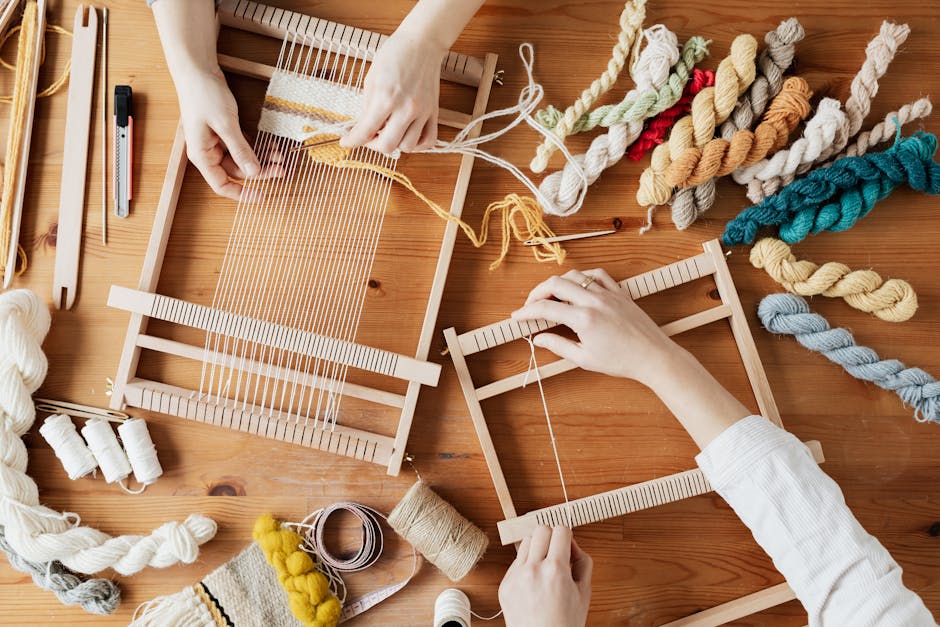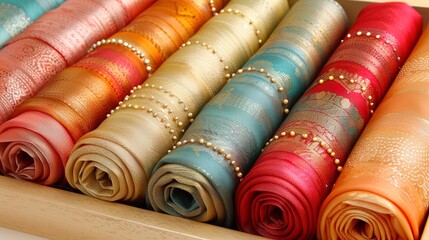The Craftsmanship Behind Indian Ethnic Wear: A Closer Look at Handloom Sarees
Dive into the vibrant world of Indian ethnic wear, where every thread weaves a story of tradition, culture, and meticulous craftsmanship. Handloom sarees, with their exquisite beauty and complex artistry, stand as a testament to India’s rich heritage. This journey into the realm of handloom sarees will unravel the dedication behind the loom, the stories of the artisans, and how these timeless pieces are making their mark in the modern world.
The Rich Heritage of Indian Handloom Sarees
Indian handloom sarees represent an enduring legacy that dates back centuries, where each region of India brings its unique narrative to the loom. From the intricate Ikat of Odisha to the rich Kanjivarams of Tamil Nadu, the diversity is staggering. This rich tapestry of styles not only showcases India’s regional diversity but also highlights the deep cultural significance woven into each saree.
In many ways, these sarees go beyond being just a piece of clothing; they are a symbol of the identity and pride of Indian women. They embody the skills and dreams of weavers who have passed their knowledge down generations, preserving traditional techniques while adapting to the changing times.
Artisan Stories: The Hands Behind the Loom
Behind every handloom saree is an artisan with a story. These weavers, often working in small, family-run workshops, commit months to create a single saree, a process that entails dedication and patience. The story of, say, Lakshmi from a small village in Andhra Pradesh, is not just about weaving sarees but about keeping a familial legacy alive, battling modernity with tradition.
The challenges these artisans face are manifold, from the diminishing demand for handloom in the face of cheaper, machine-made alternatives to the struggle of passing on their skills to the next generation. Yet, their resilience and passion for their craft remain unwavering, driving them to continue creating works of art.
Organizations and cooperatives also play a crucial role, supporting these artisans by providing them with the materials, training, and platforms to sell their sarees. This support not only helps preserve these ancient techniques but also ensures the weavers receive fair compensation for their invaluable work.
Understanding the Techniques and Materials
The creation of a handloom saree involves a variety of techniques, each adding to the saree’s distinctiveness. Techniques such as block printing, batik, and embroidery are often combined with weaving to create designs that are both intricate and richly colored. The materials used, such as silk, cotton, and wool, are carefully selected for their quality and suitability to the particular design and weaving technique.
The process is intensely laborious, starting from the procurement and preparation of yarn to its dyeing in vibrant colors - all done by hand. The looms themselves are a testament to traditional engineering, capable of producing complex patterns that machines cannot replicate. This meticulous process not only ensures the high quality of the sarees but also imbues them with a personal touch that is palpably distinct.
Where Tradition Meets Modern Fashion
Handloom sarees are experiencing a renaissance, as contemporary designers blend traditional weaving techniques with modern aesthetics. These sarees are no longer seen solely as traditional attire but are being embraced by the fashion-forward, who appreciate their timeless beauty and the sustainability aspect of handloom weaving.
Celebrities and fashion icons flaunting handloom sarees on the red carpet and social media have also fueled their popularity, bridging the gap between the old and the new. Furthermore, initiatives aimed at promoting handloom sarees not only help in keeping the tradition alive but also empower weavers, giving them the visibility and recognition they truly deserve.
As we witness the seamless merger of tradition with contemporary trends, it’s clear that handloom sarees hold a promised future. They embody a unique blend of cultural heritage and modern elegance, making them a cherished piece of Indian ethnic wear across the globe.
Handloom sarees are not just attire; they are a canvas where the past and the present paint a future of sustainable fashion, rooted in the rich tapestry of Indian ethnic wear. In every color, pattern, and weave lies a story of resilience, creativity, and the eternal beauty of India’s cultural diversity.






